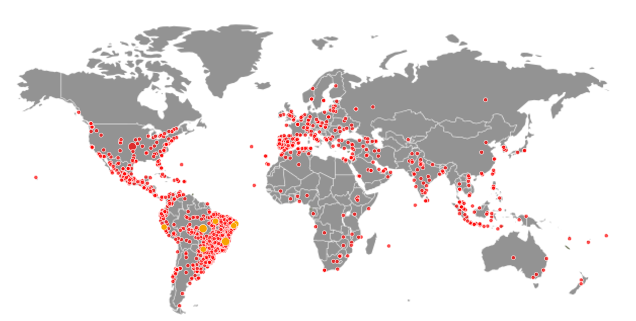RESPONSABILIDADE DA ENGENHARIA CIVIL FRENTE AO IMPACTO AMBIENTAL NEGATIVO DECORRENTE DA EXECUÇÃO DE OBRAS DE INFRAESTRUTURA
RESPONSIBILITY OF CIVIL ENGINEERING IN ADDRESSING NEGATIVE ENVIRONMENTAL IMPACT RESULTING FROM INFRASTRUCTURE CONSTRUCTION
DOI:
https://doi.org/10.61164/rmnm.v2i01.3469Keywords:
Engenharia civil; Responsabilidade; Impacto ambiental negativo.Abstract
Infrastructure construction is crucial for the economic development of a region or country, but it is important to consider the environmental impacts that these works can cause. The objective of this work is to present the importance of analyzing the responsibility of Civil Engineering in addressing these environmental impacts and how infrastructure works can negatively affect the environment. Specific objectives include presenting the ethical aspects involved, describing the applicable environmental norms and legislation, discussing environmental impact assessment, environmentally responsible technologies, and practices. For this study, a bibliographic review methodology was adopted. Thus, the research encompassed an extensive consultation of resources available on various platforms, including Scielo, Google Scholar, and the open-access portal of a network of university libraries. Additionally, specialized articles published in civil engineering journals were analyzed. The selection of materials included publications from the last 10 years, with the aim of ensuring the relevance and timeliness of the analyzed data. In conclusion, the ethical responsibility of civil engineering involves a comprehensive approach to environmental conservation and sustainability. By adopting sustainable practices, following environmental standards, and implementing mitigation measures, civil engineers can significantly contribute to minimizing negative environmental impacts associated with infrastructure development. It is imperative that professionals and regulatory bodies collaborate effectively, prioritizing environmental protection and adopting sustainable practices to ensure a harmonious balance between infrastructure development and environmental preservation.
Keywords: Civil engineering; Responsibility; Negative environmental impact.
References
AIRES, K. S. Sustentabilidade na construção civil: o caso de uma residência padrão popular. Trabalho de Conclusão de Curso de graduação em Engenharia Civil da UNINOVAFAPI: Teresina, 2019. Disponivel em: https://assets.uninovafapi.edu.br/arquivos/old/arquivos_academicos/repositorio_Biblioteca/engenharia_civil/20191/SUSTENTABILIDADE%20NA%20CONSTRU%C3%87POPULAR.pdf. Acesso em: 01 de maio, 2024.
ARAÚJO, V. M; CARDOSO, F. F. Análise dos aspectos e impactos ambientais dos canteiros de obras e suas correlações. Boletim Técnico da Escola Politécnica da USP, BT/PCC/544, São Paulo, 2018.
Amador Salomão, P. E. ., & Teixeira Oliveira Santos, A. . (2025). EVOLUÇÃO E DESAFIOS NA AVALIAÇÃO CIENTÍFICA: DA CLASSIFICAÇÃO DE PERIÓDICOS À QUALIDADE INTRÍNSECA DOS ARTIGOS. Revista Multidisciplinar Do Nordeste Mineiro, 1(1), 1–18. https://doi.org/10.61164/rmnm.v1i1.3481
BRASIL. Lei nº 6.938, de 31 de agosto de 1981. Dispõe sobre a Política Nacional do Meio Ambiente, seus fins e mecanismos de formulação e aplicação, e dá outras providências. Diário Oficial da União, Brasília, DF, 2 set. 1981. Disponível em: < https://urbanismoemeioambiente.fortaleza.ce.gov.br/images/urbanismo-e-meio-ambiente/infocidade/lei_n%C2%BA_6.938-1989_-_politica_nacional_de_meio_ambiente.pdf >. Acesso em: 4 de abr. 2024.
BUENO, C. Avaliação de Desempenho Ambiental de Edificações Habitacionais: Análise Comparativa dos Sistemas de Certificação no Contexto Brasileiro. Dissertação (Mestrado em Arquitetura e Urbanismo). Escola de Engenharia de São Carlos, Universidade de São Paulo, São Carlos, 2021.
CARDOSO, Franciso Ferreira; ARAÚJO, Viviane Miranda. Levantamento do estado da arte: canteiro de obras. Projeto de tecnologias para construção habitacional mais sustentável. São Paulo: FINEP, 2017.
CEOTTO, L.H. Empreendimentos Sustentáveis x Empresas Sustentáveis. In: Simpósio brasileiro de construção sustentável, I, 2018, São Paulo. Disponível em: < http://www.cbcs.org.br/sbcs08/slides_pdf/Luiz_Ceotto_SBCS18.pdf>. Acesso em: 05 de maio, 2024. Disponivel em: https://www.cbcs.org.br/sbcs08/slides_pdf/Luiz_Ceotto_SBCS08.pdf. Acesso em: 23 de abr. 2024.
GANGOLELLS, M., CASALS, M., FORCADA, N., FUERTES, A., ROCA, W. Model for enhancing integrated identification, assessment, and operational control of on-site environmental impacts and Health and safety risks in construction firms. Journal of Construction Engineering and Management, No. 139, pp. 138-147, 2020. Disponivel em: https://www.researchgate.26048394Model_for_Enhancing_ in_Construction_Firms. Acesso em: 12 de abr. 2024.
GIL, A. C. Métodos e técnicas de pesquisa social. 6 ed. São Paulo: Atlas, 2008.
GOMES, C. P. et al. Impacto Ambiental e Gerenciamento de Resíduos Sólidos Advindos da Construção Civil no Brasil: Uma Revisão de Literatura. Id on Line Rev. Mult. Psic. V.15, N. 55, p. 729-742, Maio/2021. Disponivel em: 3108-Texto do Artigo-8380-12349-10-20210531 (1).pdf. Acesso em: 05 de maio, 2024.
GOMES, M. P.; Matriz De Interação Qualitativa De Aspectos E Impactos Ambientais. No Seguimento De Rochas Ornamentais Estudo De Caso - São Rafael/Rn1. Revista da FARN, Natal, 2019, v. 8, n. 1/2, p. 135-159.
GOMES, Jarbas Herinson Dias et al. Análise comparativa do sistema construtivo de alvenaria convencional e sistema construtivo de alvenaria estrutural em uma casa térrea em Teófilo Otoni. Revista Multidisciplinar do Nordeste Mineiro, v. 2, n. 1, 2018.
SALOMÃO, Pedro Emílio Amador et al. Impactos ambientais gerados pela construção e operação de rodovias. Research, Society and Development, v. 8, n. 10, p. e278101368-e278101368, 2019.
DA SILVA BARBOSA, Uende et al. reutilização do concreto como contribuição para a sustentabilidade na construção civil. Revista Multidisciplinar do Nordeste Mineiro, v. 2, n. 1, 2018.
MOTA. Introdução à engenharia ambiental. 4ª ed. Rio de Janeiro: ABES, 2023.
SIMONETTI, H. Estudo de impactos ambientais gerados pelas rodovias: sistematização do processo de elaboração de EIA/RIMA. Porto Alegre, 2018. Disponível em:< https: // www. lume. ufrgs.br/ bitstream/ handle/ 10183/28531/ 000769150.pdf>. Acesso em: 2 de abr. 2024.
SÁ, A.C.C et al. Construção e demolição civil na cidade de Espinosa, Minas Gerais: mapeamento dos pontos de disposição de resíduos. Revista Espinhaço, UFVJM, [S.l.], p. 49-58, fev. 2019. ISSN 2317-0611. Disponível em: http://www.revistaespinhaco.com/index.php/journal/article/view/226. Acesso em: 27 abr. 2024.
SILVA, J. M; CORREIA, L. S. Impactos ambientais ocasionados pela construção civil: uma análise das propostas de sustentabilidade no âmbito construtivo. Congresso Técnico Científico da Engenharia e da Agronomia – CONTECC, 2021. Disponivel em: https://www.confea.org.br/midias/uploads-imce/Contecc2021/Civil/IMPACTOS%20AMBIENTAIS%20OCASIONADOS%20PELA%20CONSTRU%20DE%20SUSTENTABILIDADE% %82MBITO%20CONSTRUTIVO.pdf. Acesso em: 19 de abr. 2024.
SINEK, S. Start With Why: How Great Leaders Inspire Everyone to Take Action. Penguin Books, 2015.
Downloads
Published
How to Cite
Issue
Section
License
Copyright (c) 2025 Revista Multidisciplinar do Nordeste Mineiro

This work is licensed under a Creative Commons Attribution-NonCommercial-ShareAlike 4.0 International License.




